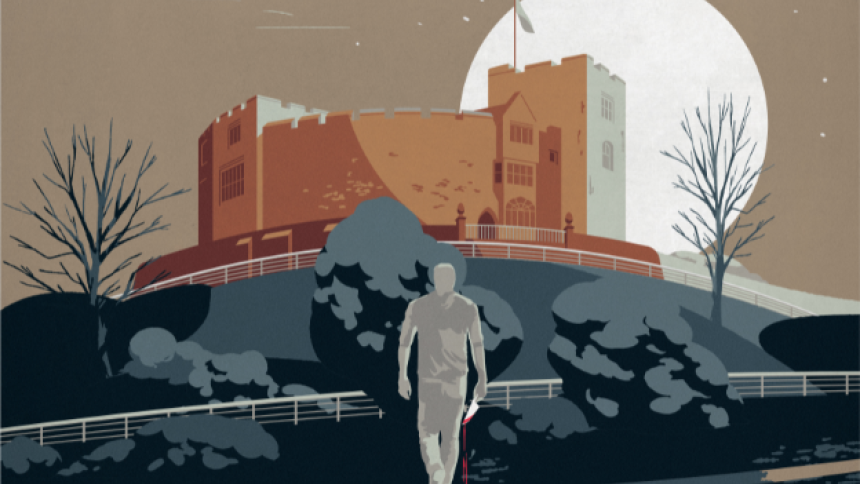
Tamworth: Crime Profile
In new series Murdertown, host Katherine Kelly probes some of the most startling crimes to befall Britain. Each episode takes her to a new town or city, where local police officers, residents and the relatives impacted by terrible crimes give us an insight into just what happened.
In Tamworth, we trace the fallout from the murder of Heather Tell: an ambitious, vibrant, dance-obsessed teenage girl. On her way to meet her friend for an evening out, she who was literally dragged into the woods and killed. A nationwide hunt for the culprit ensued, with every forensic technique used by the increasingly desperate detectives. But how would they eventually snare the sexually sadistic killer who so jolted this quaint market town in Staffordshire?
Tamworth is known for many things. There’s the castle, for one thing – a picture-postcard Norman castle which draws in history lovers. Tamworth was also the home of the Reliant Motor Company, famed for its iconic three-wheelers. And, most significantly for those interested in the history of crime and detection, the local MP was once Sir Robert Peel, who would serve as British Prime Minister and also spearhead the launch of modern policing in this country – which is why police have been dubbed “bobbies” ever since.
Sadly, the town has also been the setting for violent crimes in the past. In fact, decades before Heather Tell’s murder, another teenager was also dragged into the woods and ruthlessly slain – though this case had an even darker and more tragic aftermath.
Judith Roberts was just 14 when she was savagely killed in June 1972. She had been riding her bicycle at the time – someone had simply grabbed her, pulled her off her bike and beaten her to death. A vast investigation immediately went into overdrive, with hundreds of detectives taking more than 11,000 statements, even putting up road blocks in a vain attempt to keep the killer from fleeing the area.
The man they eventually apprehended was one Andrew Evans, a soldier stationed in the area. Bizarrely, he actually handed himself in after claiming to have seen Judith’s face in a dream. Confessing, then retracting his confession, Evans was handed a life sentence. He would serve over 25 years in prison before his conviction – which had been based on nothing but false memories – was overturned. Later, he would reveal just how anxious and depressed he’d been as a young man. “By confessing, I thought I'd be able to rid myself of all the crap going on in my head,” he explained.
It was a gross miscarriage of justice which robbed a man of a quarter of a century of his life. Not only that – it meant a child killer has evaded justice all these years. So who really killed Judith Roberts? Some detectives have suggested the culprit could be none other thanPeter Sutcliffe, the Yorkshire Ripper.
Many believe Sutcliffe was responsible for far more murders than official records suggest, and that Judith Roberts is one of several people he preyed upon in the Midlands. While Sutcliffe has been questioned by cold case investigators about this, it’s likely Judith’s killer will never be identified for certain.
Several years before Judith’s murder, Staffordshire was rocked by a series of crimes which rivalled even the Moors Murders for national notoriety. These were the Cannock Chase murders, named after the wooded area – just half an hour’s drive from Tamworth – where the bodies of young girls were found in the mid-1960s.
The first two were Margaret Reynolds and Diana Tift, whose corpses were discovered together in 1966. One had vanished while walking to school, the other on her way to a relative’s house. The following year, another young girl – Christine Darby – was found in the same area. The monumental manhunt was one of the biggest in British history, but it was only when the culprit tried and failed to kidnap yet another girl that an eyewitness spotted him and police homed in.
The killer was Raymond Leslie Morris, who – unlike the likes of Ian Brady and Fred West – has never become commonly known as one of the infamous ghouls of contemporary culture. Indeed, the Cannock Chase murders have shrunk from view, in striking contrast to the similar Moors Murders of the same decade.
Possibly this is because Morris acted alone, and was only officially convicted of the Christine Darby killing, due to lack of evidence tying him to the previous murders, though he’s widely assumed to be the serial killer behind all of them. Morris, who died in jail in 2014, is still remembered as the “Monster of Cannock Chase” by those who helped snare him. In the words of one officer, Maureen Freeman, “I will never forget those cold, calculating eyes.”
Watch Murdertown, Mondays at 9pm.







